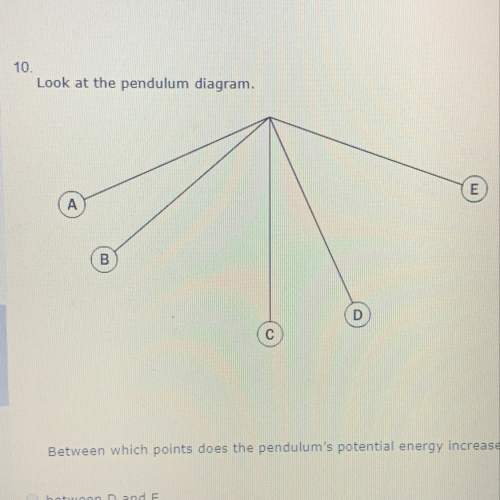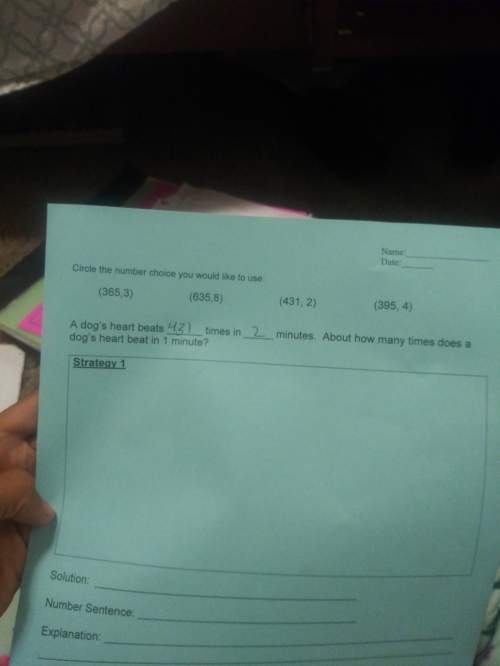
Answers: 1
Other questions on the subject: Physics

Physics, 21.06.2019 22:00, Angelo1660
Air is held within a frictionless piston-cylinder container, which is oriented vertically. the mass of the piston is 0.45 kg and the cross-sectional area is 0.0030 m2. initially (state 1) the pressure of the gas is sufficient to support the weight of the piston as well as the force exerted by the atmospheric pressure ( 101.32 kpa). the volume occupied by the air within the cylinder in state 1 is 1.00 liter. one end of a spring (with spring constant k = 1000 n/m) is attached to the top of the piston, while the other end of the spring is attached to a stage that can move vertically. initially the spring is undeflected and therefore exerts no force. then the stage is then moved quasistatically downward a distance of 10.0 cm, at which point the system reaches state 2. the piston-cylinder is not insulated; rather it remains in diathermal contact with the surroundings, which are at a constant temperature of 300 k. what is the change of pressure within the container?
Answers: 3

Physics, 22.06.2019 15:20, avree4722
Abag of potato chips contains 2.00 l of air when it is sealed at sea level at a pressure of 1.00 atm and a temperature of 20.0 deg c. what will be the volume of the air in the bag if you take it with you, still sealed, to the mountains where the temperature is 7.00 deg c and atmospheric pressure is 70.0 kpa? assume that the bag behaves like a balloon and that the air in the bag is in thermal equilibrium with the outside air.
Answers: 3

Physics, 22.06.2019 17:00, jenn8055
In the future, people will only enjoy one sport: electrodisc. in this sport, you gain points when you cause metallic discs hovering on a field to exchange charge. you are an electrodisc player playing the popular four disc variant. the disks have charges of qa = −8.0 µc, qb = −2.0 µc, qc = +5.0 µc, and qd = +12.0 µc. (1) you bring two disks together and then separate them. you measure the resulting charge of these two disks and find that it is +5.0 µc per disk. which two disks did you bring together? (a) a and b (b) a and c (c)a and d (d)b and c(e) b and d (f) c and d. (2) you bring three disks together and then separate them. you measure the resulting charge of these three disks and find that it is +3.0 µc per disk. which three disks did you bring together? a, b, and c (a) a, b, and d (c) a, c, and d (d) b, c, and d. (3) given the resulting charge of each disk measured in (b) is +3.0 µc, how many electrons would you need to add to a disk of this charge to electrically neutralize it? electrons
Answers: 3

Physics, 22.06.2019 20:30, carson9373
What are some important factors to consider when choosing a warm-up before your workout?
Answers: 2
Do you know the correct answer?
Can you use a bunsen burner to provide heat in the laboratory...
Questions in other subjects:


Mathematics, 28.01.2020 17:54

Social Studies, 28.01.2020 17:54

Social Studies, 28.01.2020 17:54


Health, 28.01.2020 17:54



Mathematics, 28.01.2020 17:54









